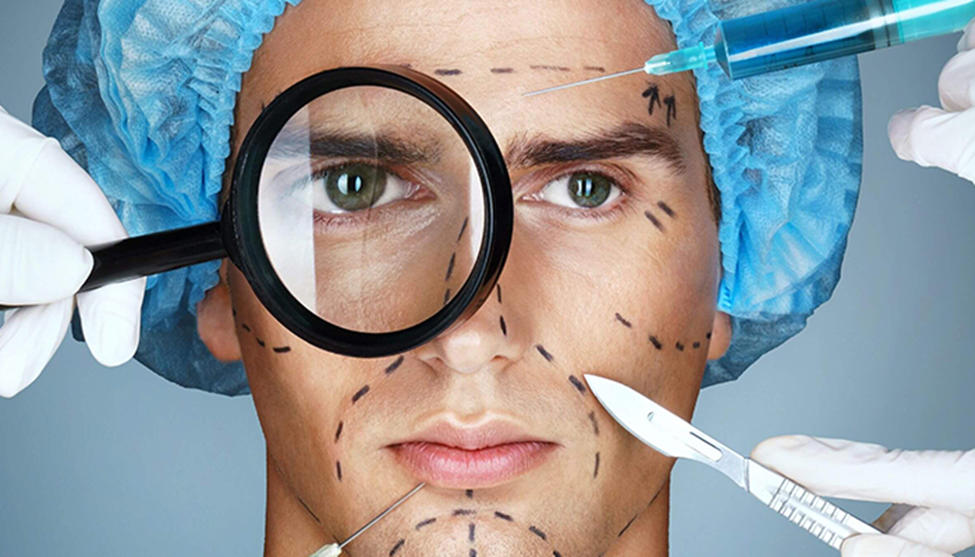
Plastic surgery is a surgical specialty. It can be used to improve one’s vision and reconstruct facial and body tissue defects. These problems can be caused by disease, injury (trauma), or birth defects.
Plastic surgery restores and improves appearance along with function. It can involve surgery on any part of the anatomy except the central nervous system (brain and spinal cord).
Plastic surgery can be performed:
- Address skin problems, including skin cancer, scars, burns, birthmarks, and tattoo removal
- Reshape the facial bones.
- Correct a condition the baby was born with (birth defect), such as an abnormally shaped outer ear, cleft palate, and cleft lip.
Healthcare providers perform plastic surgery;
It is important to choose a healthcare provider who is certified in plastic surgery by the American Board of Plastic Surgery. Typically, a surgeon who is board certified in plastic surgery has graduated from an accredited medical school. They complete at least 6 years of graduate surgical education. This often includes 3 years of general surgery and 3 years of plastic surgery. In addition, surgeons must pass comprehensive written and oral exams to become board certified. Board certification is renewed every 10 years. This ensures ongoing competency in the specialty.
Procedure of plastic surgery
Plastic surgery includes both reconstructive and cosmetic procedures:
- Reconstructive plastic surgery
Typically, reconstructive surgery is performed on abnormal body structures that may be caused by:
- Injury
- Infection
- Developmental abnormalities
- Congenital (present at birth) anomalies
- Disease
- Tumor
This type of surgery is often performed to improve function. It can also be done to change one’s vision.
- Aesthetic (cosmetic) surgery
As defined by the American Medical Association (AMA) in 1989, “Cosmetic surgery is performed to reshape the normal structure of the body to improve the patient’s appearance and self-esteem.” Cosmetic or aesthetic surgery includes various resurfacing procedures to treat facial structure (eg, facelifts for age-related changes, rhinoplasty for a larger nose, blepharoplasty for excess eyelid skin), as well as other body parts including but not limited to Breast (eg, breast augmentation) and abdomen (eg, abdominoplasty after pregnancy). The field also includes the use of various injections, such as fillers and neurotoxins, to address cognitive and age-related changes. Trainees may pursue further fellowship training in the field if desired.
- Hair Transplantation
Hair transplantation is a surgical technique used by plastic surgeons to transfer hair follicles from one part of the body, the donor site, to the recipient’s deficient site. This minimally invasive procedure can be used in balding areas, or to restore eyelashes, eyebrows, pubic or chest hair. It can also be used to fill in scar tissue from previous injuries or surgeries. Trainees can get an opportunity to pursue it as an interest in various cosmetic centers across the country.
- Gender Confirmation Surgery
Gender confirmation surgery is a surgical procedure that changes a transgender person’s physical appearance and the function of their existing sex characteristics to resemble those socially associated with their identified gender. Is. This includes facial feminization or masculinization, breast augmentation or mastectomy, vaginoplasties and phalloplasties. Nguyen PD et al. showed that trainees were willing to address transgender concerns about plastic surgery and felt that plastic surgeons were the most appropriate specialty referrals for all types of gender-affirming surgery. A number of fellowships in this field have recently become available for trainees seeking additional training.
- Hand/Upper Extremity Reconstruction
Plastic surgeons can care for both pediatric and adult patients with hand/upper extremity deformities of traumatic, oncologic, and congenital/syndromic etiologies. In traumatic cases, not only may the bones need to be repaired, but possibly all or part of the hand and upper extremity may need to be replanted. In addition, nerve and tendon repair and transfer are important techniques for restoring sensation and function in the upper extremity. Trainees may pursue additional fellowship training in this field.
- Migraine surgery
According to migraineresearchfoundation.org, about 1 in 4 American households has some form of migraine. Migraine pain can be debilitating and is caused by irritation of blood vessels, nerves and other soft tissues. Plastic surgeons can play an important role in treating migraines. Various treatment methods have been developed, including endoscopic and direct surgical release of nerve impulses (such as the transpalpebral approach for anterior impulses).
- Neurosurgery
Plastic surgeons perform neurosurgery to treat a variety of conditions. Various applications of neurosurgery include brachial plexus surgery, facial reconstruction, repair after traumatic injury, targeted muscle rehabilitation and regenerative peripheral nerve interfaces. These different approaches aim to improve the quality of life in patients with congenital, acquired or traumatic neurological pathology.
- Head/Neck Surgical Oncology
Plastic surgeons can also treat cancers of the head/neck area, including melanoma, squamous cell carcinoma and osteosarcoma. As one of the oldest subspecialties of plastic surgery, head/neck surgical oncology training teaches trainees not only cancer management but also advanced techniques used to reconstruct tumor defects. Teaches that restore form (i.e., aesthetics) and function (i.e., swallowing). breathing, biting)


